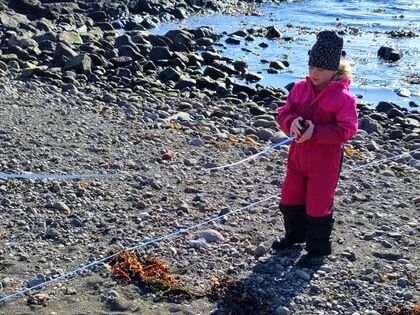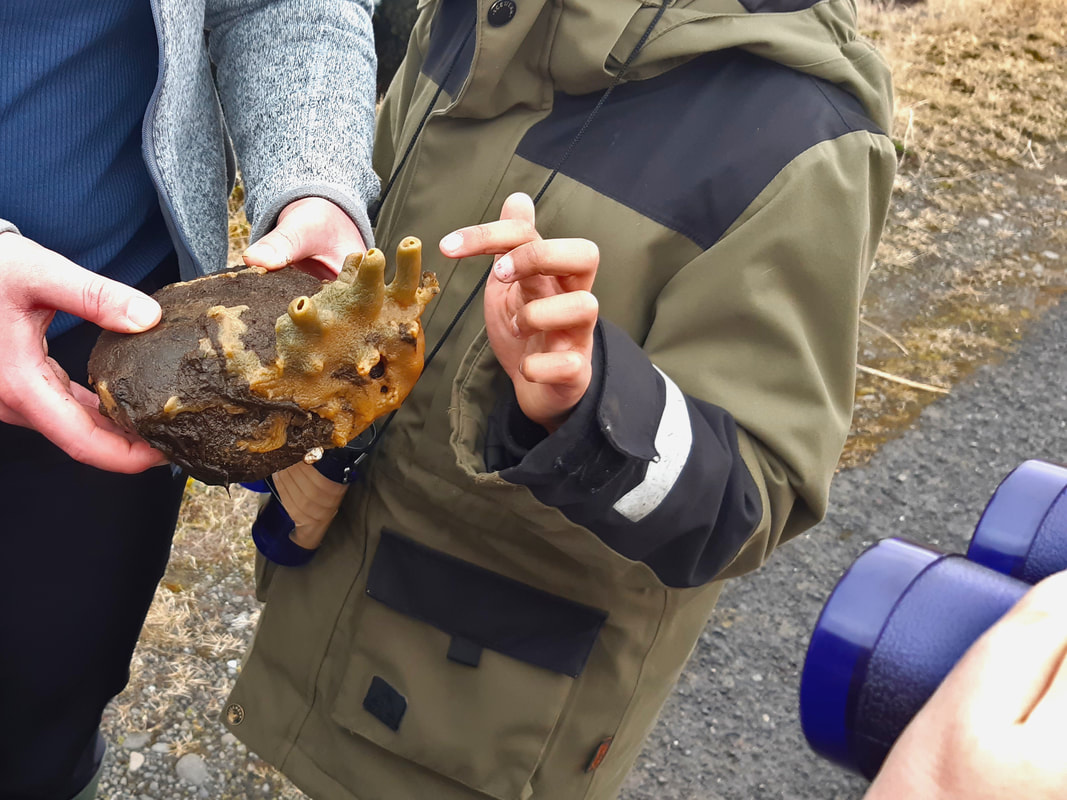0 Comments
Vikan 17. apríl var fyrsta vöktunarvika krabba og sjávar með skólanum á Hvammstanga. Á þremur dögum tóku allir nemendur 5.-10. bekkjar skólans, auk Frístundar (1.-4. bekkur), þátt í þessu staðbundnu náms- og eftirlitsverkefni. Krabbagildrur voru settar upp á ýmsum stöðum í höfninni og síðan athugað með hópunum til að skrá hvað veiddist. Skráð voru veðurgögn, tegundir, fjöldi einstaklinga, tegundir, stærðir og þyngd dýranna. Algengasta tegundin sem fannst var Trjónukrabbi (Hyas araneus) var og allir einstaklingar sem fundust voru karlkyns. Einn karlkyns Litli trjónukrabbi - Hyas coarctatus) var fundust auk einnar Krossfiskur (Asterias rubens) og tveir Marhnútar (Myoxocephalus scorpius). Í krabbagildrunum fundust einnig algengar tegundir af Marfló og Polychaete ormar. Loks var grjóti þakið Sjávarsvampum (líklega tegundin Halichondria panicea) safnað við fjöru til að sýna æskuna úr Frístund. Öllum dýrunum voru sleppt á öruggan hátt.
Upplýsingarnar sem unglingar safnað voru færðar inn í Youth for Arctic Nature appið og eru aðgengilegar þar fyrir alla sem hafa áhuga. The week of the 17th of April was the first crab and sealife monitoring week with the school in Hvammstangi. Over three days, all the students of grades 5-10 of the school, as well as Frístund (grades 1-4), participated in this place-based learning and monitoring project. Crab traps were set in various parts of the harbor, then checked with the groups to record what was caught. Weather data, species, number of individuals, species, sizes and weights of the animals were recorded. The most common species found was the Common spider crab (Hyas araneus) was the most common species found, and all individuals found were male. One male Arctic lyre crab (Hyas coarctatus) as well as one Common starfish (Asterias rubens) and two Shorthorn sculpins (Myoxocephalus scorpius). Different species of Amphipods and some Polychaete worms were also commonly found in the crab traps. Finally, a rock covered in Sea sponges (probably the species Halichondria panicea) was collected at low tide to show the youth from Frístund. All the animals were safely released. The information collected by youth was entered into the Youth for Arctic Nature app, and is available there for anyone interested. |
Archives
March 2024
Categories
All
|













 RSS Feed
RSS Feed












